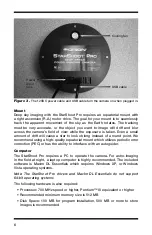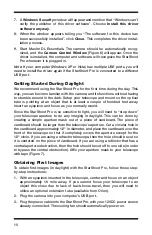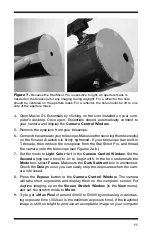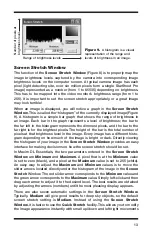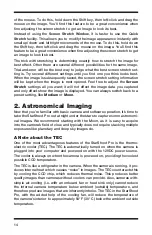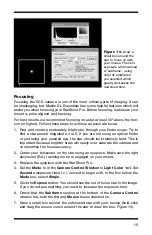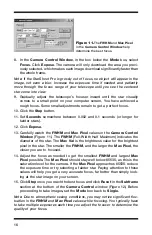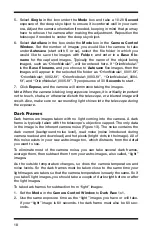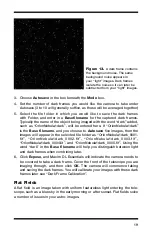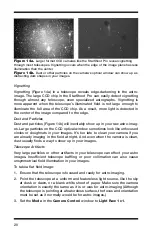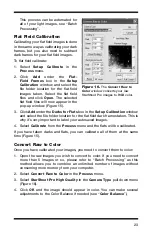
20
Vignetting
Vignetting (Figure 14a) in a telescope reveals edge-darkening in the astro-
image. The large CCD chip in the StarShoot Pro can easily detect vignetting
through almost any telescope, even specialized astrographs. Vignetting is
more apparent when the telescope’s illuminated field is not large enough to
illuminate the full area of the CCD chip. As a result, more light is detected in
the center of the image compared to the edge.
Dust and Particles
Dust and particles (Figure 14b) will inevitably show up in your raw astro-imag-
es. Large particles on the CCD optical window sometimes look like unfocused
circles or doughnuts in your images. It’s too late to clean your camera if you
are already imaging in the field at night. And even when the camera is clean,
dust usually finds a way to show up in your images.
Telescope Artifacts
Very large particles or other artifacts in your telescope can effect your astro
images. Insufficient telescope baffling or poor collimation can also cause
unsymmetrical field illumination in your images.
To take a flat field image:
1. Ensure that the telescope is focused and ready for astro-imaging.
2. Point the telescope at a uniform and featureless light source, like the sky
at dusk or dawn, or a blank white sheet of paper. Make sure the camera
orientation is exactly the same as it is or was for astro-imaging (Although
the telescope is pointing at a featureless surface, the focus and orientation
must be set as it normally would be for astro-images.)
3. Set the
Mode
in the
Camera Control
window to
Light Raw 1x1
.
Figure 14a.
Larger format CCD cameras like the StarShoot Pro reveal vignetting
through most telescopes. Vignetting occurs when the edge of the image plane has less
illumination than the center.
Figure 14b.
Dust or other particles on the camera’s optical window can show up as
distracting dark shapes in your images.

